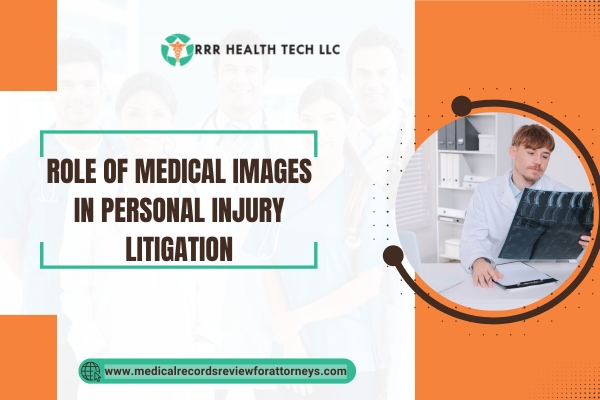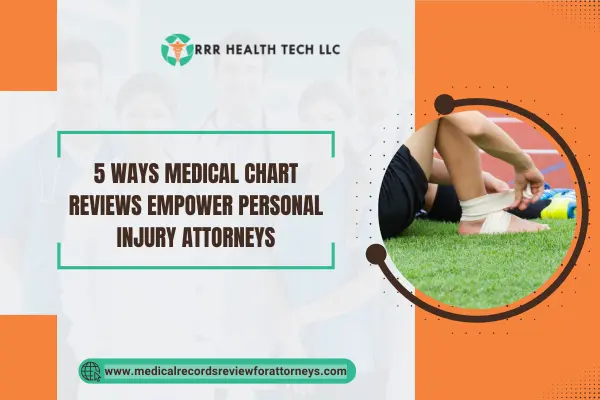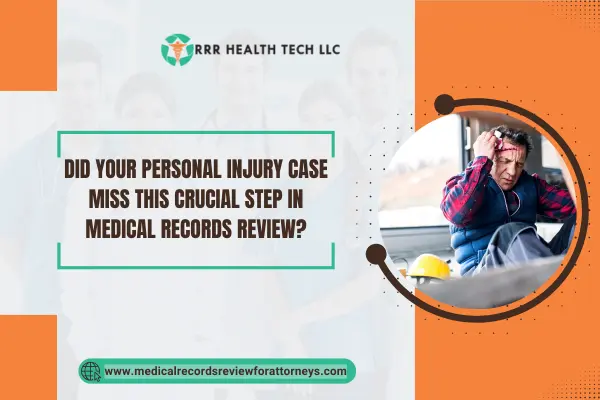
Introduction
In every emotion-filled personal injury litigation, there is a heavy emphasis on evidence, and which evidence to present could most likely decide the case. Within the different types of evidence, medical images considerably help in providing proof about the injuries sustained and their severity. This article highlights the importance of medical imaging in personal injury litigation cases, the capabilities of attorneys through the review of medical records, and the expected future model of this industry in 2024 with reference to recent trends.
Understanding Medical Images
What Are Medical Images?
Medical imaging consists of a number of images, which consist of different parts of the body of human beings done for diagnostic and therapeutic means. Media types encompass but are not limited to:
- X-rays: Considered appropriate in the diagnosis of fractures and other bone problems.
- CT scans: Allow for the visualization of cross-sectional pictures that are many and they help in specific diagnoses.
- MRI scans: Makes use of magnetic fields that facilitate imaging of various tissues and organs considered important in soft tissue damage.
- Ultrasounds: Most applicable in the field of antenatal care but can still be useful in soft tissue damages assessment.
Importance of Medical Imaging in Personal Injury Cases
Medical images are critical pieces of evidence in cases of personal injury, in that they assist in:
- Show the Severity of Injuries: Pictures allow showing how severe or which kind of injuries the afflicted has.
- Support Statements: Medical imaging is then used to assist in the claims of medical professionals or victims.
- Formulate Treatment Plans: They assist in determining what medical treatment is to be provided, which is important in determining damages.
The Process of Medical Record Review
What is Medical Record Review?
Medical record review is the procedure of collecting, assembling and analyzing documents and images that contain information which is useful in legal matters. This process is highly crucial for lawyers with a client bringing an injury case.
How Medical Record Review Services Assist Attorneys
- Expert Analysis: Review of medical records and other documents is an overwhelming task and medical record review specialists prepare the legal practitioners regarding the images.
- Evidence Compilation: In these cases, they are the people who are responsible for accumulating and arranging medical pictures and evidence for easy presentation by the lawyer.
- Testimony Preparation: So before going for any deposition or a court trial, it is possible to give the lawyer the necessary medical findings and the significance regarding the case.
Current Trends in Medical Imaging for 2024
Technological Advancements
The field of medical imaging is continually evolving. In 2024, notable advancements include:
• AI Integration: More healthcare professionals utilize artificial intelligence to assess medical images and improve how quickly and accurately diagnoses are made.
• Telemedicine: Medical imaging and additional expert consultations are provided with more swiftness because remote consultations are more expanding practice.
Statistics on Medical Imaging in Personal Injury Cases
• One research reported involvement of medical imaging in 75% of personal injury cases as a major cause for compensation that is higher than what would have obtained if there was no imaging undertaken.
• As reported by the American Medical Association, medical imaging techniques have been adopted in legal cases with increases of 30 percent in the period of five years.
Case Studies
Case Study 1: Car Accident Injury
Overview of the Case: One of the clients sustained serious injuries on the lower back when another driver who was negligent caused a car accident.
Challenges: The defense attorneys were contesting the claim that the injuries had been suffered during the accident and argued that they were sustained previously.
Solutions: Such legal issues as MRI examination and medical record reviews became effective, as a built-out timeline of treatment showed how injuries were progressive, and the final copies of scans were undeniably expressive of the injuries sustained.
Case Study 2: Slip and Fall Incident
Overview of the Case: A client suffered a fractured wrist due to a slip and fall accident in a grocery store.
Challenges: The store’s insurance company attempted to minimize the injury’s impact on the client’s life.
Solutions: The medical record review highlighted X-rays and treatment plans that illustrated the injury’s long-term effects, supported by expert testimony.
Conclusion
Medical images, obtained through CT scans or MRIs, hold great importance in court cases concerning Personal Injury, as they act as persuasive tools and evidence that can help finish off cases. With the purchase of these images and medical record reviews, legal practitioners are able to present solid cases brought forward on behalf of their clients and help bring justice against those who are wronged.


